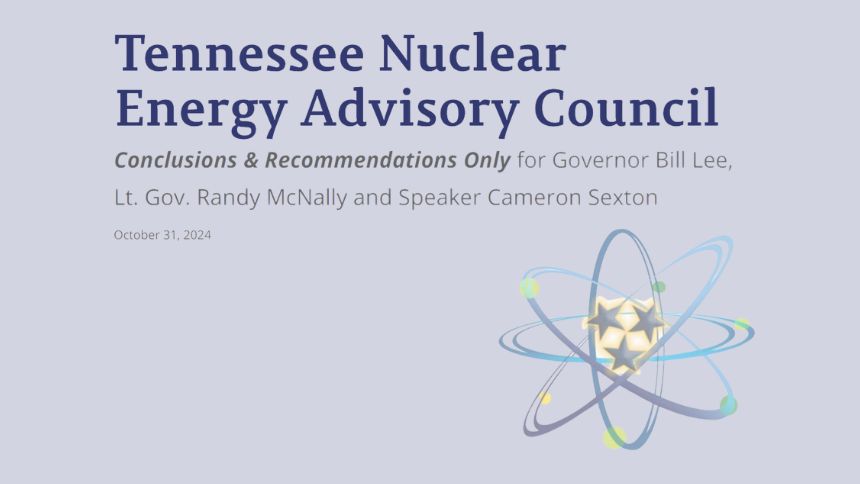
Report of the TN Nuclear Energy Advisory Council has been released
The Council made recommendations in five key areas.
Tennessee Governor Bill Lee announced late Thursday that the Tennessee Nuclear Energy Advisory Council delivered its final report to guide the state in advancing nuclear energy innovation and driving continued investment to create a nuclear energy ecosystem that continues to lead the Nation.
The Council’s report includes recommendations in five key areas that reinforce Tennessee’s leading position in the nuclear industry and will enable deployment of critical baseload energy and support for a vibrant nuclear ecosystem that is key to the state’s overall economy. Those areas are:
- Addressing “First-of-a-Kind” (FOAK) Costs;
- Growing a Strong Supply Chain;
- Coordinating and Enhancing Workforce Development;
- Regulatory Responsiveness; and
- Coalition Building.
The full report can be found here. A summary listing of the findings and recommendations can be found here.
The Governor established the Council through Executive Order 101 in May 2023. The council consists of 22 members – many from the Knoxville-Oak Ridge region (see list here) – that represent industry, higher education, workforce development, and government. The group was led by Chairman David W. Salyers, Tennessee Department of Environment and Conservation Commissioner, and Vice Chairman Jeff Smith, University of Tennessee Vice President for National Laboratories.
The report’s primary conclusion was recognition of the benefits of leadership and success with the potential future deployment of a Small Modular Reactor (SMR) at the Clinch River Nuclear Site – benefits that will extend far beyond the Tennessee Valley. The Council recommended the State should actively coordinate with and assist the Tennessee Valley Authority (TVA) in support of its consideration of deploying an SMR at the Clinch River site – potentially the first SMR to generate power for the electrical grid in the United States.
The Council agrees that TVA’s approach is the lowest risk approach to deploying new nuclear and provides the shortest possible time frame to not only deploy a first reactor but subsequent reactors by the end of the next decade, at costs the market can bear.
“For new nuclear to become a reality there has to be a first mover,” said Smith. “There is no other utility in the United States better positioned to lead in this regard than TVA. Not just for TVA, but for our nation’s security, we need TVA to be successful in deployment of new nuclear at Clinch River.”
Like what you've read?
Forward to a friend!

